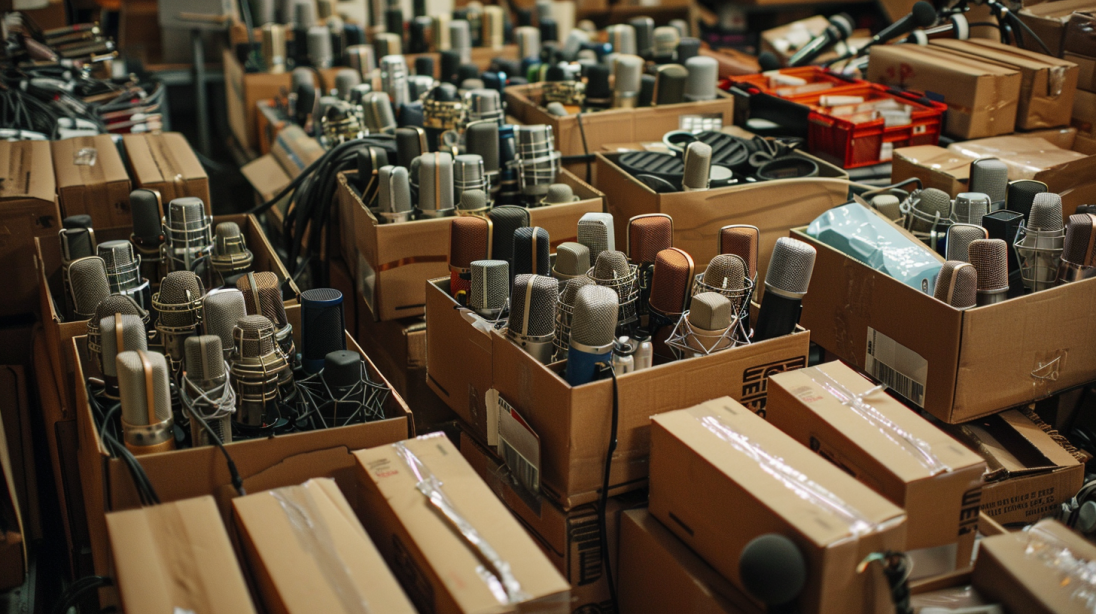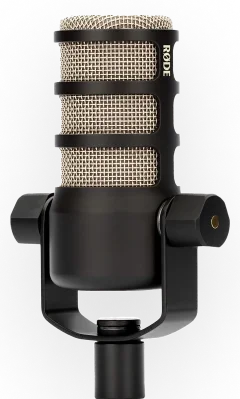Sounds Profitable’s latest study is built from a cross-platform survey of American consumers and their attitudes towards ad-supported media channels. Tune in April 6th to hear the current state of podcast ad perceptions in comparison to CTV, social media, and others. Register now.
Podcasting’s intimate nature is often touted as one of its greatest strengths, but it’s also a double-edged sword. The ability for a creator to be that close to their audience and for the audience to invite them directly into their ears ultimately means that we’re going to hear more complaints as things change or, more importantly, as the interest in podcast advertising grows.
While I can easily skip any bad ad I hear, there’s something more intense about a bad audio ad being pumped into my ears during a podcast than the display or video ads I feel I can more easily ignore. Nobody is yelling at the star of their favorite TV show for the ads that accompany it in broadcast or streaming, but they absolutely will do so in podcasting, adding more stress to the situation.
The issues we face in podcast advertising are almost entirely not unique to podcast advertising; we’re just far more aware of them than in any other medium, which is a positive thing. Today, the tolerance to prioritize revenue over quality on CTV is astounding. The patience readers have to navigate ad-filled websites without piling on the publisher or the author is absolutely enviable.
But that doesn’t mean what they’re doing is ok and that we should follow suit. Podcasting consistently has a more decisive lead on nearly all advertising channels, with user sentiment toward the ads themselves and a stronger affinity for brands who choose to advertise through podcasting. In fact, in our upcoming study, The Ad Bargain (which you can register for our upcoming free webinar here), we see clearly that consumers find podcast ads much less annoying than ads on YouTube, or on CTV:
To collectively preserve that, It’s important to understand each step in how ads can get to the listener and what we can do to improve that experience.
Responsibility
Starting with the tough love: every ad a listener hears on a podcast is the responsibility of the publisher of that podcast. It doesn’t matter if they placed the ad themselves or someone inserted it for them; the publisher chooses who has the right to place ads in their podcast and accepts any limitations of the tools they choose to use.
This doesn’t excuse companies down the line from the publisher, and everyone in that chain will need to do more to be competitive and win over publishers who are constantly weighing the revenue opportunities vs the impact on their brand. But complaining loudly about a chosen solution while still cashing the checks makes it difficult to expect progress.
The Flow of Ads
Going from most hands-on to least hands-on, let’s start with publisher-managed ads.
What I mean by publisher-managed ads is that the publisher is directly responsible for placing the ad, integrated, embedded, or dynamically inserted, into the podcast. This category includes the publisher directly selling their inventory or working with a third-party seller or marketplace that allows the publisher to opt in and out on a campaign-by-campaign basis and to flight the ad themselves. While this level of control also allows the publisher to offer not only host read ads but endorsements, which often raise the CPM, it also takes substantially more time and people-power to get it done. That trade-off provides publishers the most direct control of what ads run on their content, but comes with the risk that rejecting ad after ad will likely lead to third-party sellers and marketplaces offering that publisher fewer opportunities.
In the middle, before we’re entirely hands-off, we’ve got third-party managed sales. These solutions aren’t quite programmatic, which we’ll get to in the next step, but they don’t require publisher approval on each campaign. The most stand-out examples of this step are Spotify Ad Network (SPAN) and ART19, where the publisher opts in to let the selling team manage campaigns directly sold against the audience or context of all podcasts who have opted in. Think of this like a platform-wide super network. The publisher is expected to correctly identify their podcast, by both podcast categories and IAB content categories, and also can list the IAB content categories of ads they would like to block from their podcast.
This step is the one that deserves the highest level of scrutiny. The seller, representing all of those publishers, is ultimately responsible for vetting all of the inventory they let into their platform to confirm it’s been correctly identified. But they’re also just as responsible for doing the same on the advertiser side, which means making their best judgment call on what that category is if the advertiser doesn’t supply it (which they often don’t). The priority in this category is consistently put on fulfilling the campaign sold to the advertiser, which means that the third-party managed sales team, when given a choice, will select categories that allow it to fill, especially when so few advertisers share their IAB content categories. Even if those categories are not the ones the publisher would pick if asked to identify the advertiser.
In the final category, we have programmatic, which is both the most hands-off but can provide the most technical control. In situations where a publisher is directly utilizing an SSP, they’re able to create block lists of IAB content categories and even specific advertisers by name or brand domain. For the most critical of publishers, they can even set all ads to be blocked by default, assigning a member of their team to review the advertiser and move them into their allowed list. With the volume of programmatic buying out there, the revenue loss in this scenario is minimal when doing manual approval, providing the publisher final say for everything they let run on their podcast.
However, many podcast publishers participating in programmatic aren’t directly setting up their own SSP relationship, which also requires that they directly connect to each advertising demand source themselves. A significant number opt for the programmatic solutions offered and managed by their hosting platforms, such as those provided by Libsyn, RedCircle, Simplecast, Soundstack, and Spreaker, to name a few. In exchange for immediately being connected to all of the demand sources that they’ve painstakingly worked to connect, the publishers turn over that granular control, moving back to IAB content category blocklists and relying on the platform to protect their inventory. Many platforms are developing their own solutions, like Spreaker’s MAGDA, which does an additional check on both the publisher and the ad itself to make sure IAB classifications are correct to reduce mismatches.
Making Improvements
Publishers looking for total control over their inventory absolutely have the tools at their disposal to do so today. In exchange, nearly all the work is on them, along with both finding the demand sources and approving the advertisers. But that’s not always an option for all publishers, even the largest ones. The benefit of these aggregate solutions, network sales or programmatic, is that they are a unified way to buy a large amount of inventory in podcasting that mimics how advertisers purchase in other channels. Reduced friction increases spending.
So how do we improve? A big first step is complete transparency. Buyers rightfully continue to insist on not buying shows that don’t correctly identify themselves as they should. But the same has to happen on the buy-side, whether the advertiser is direct, through a DSP, or through the managed marketplace or network. Publishers deserve the ability to know every single advertiser that is running on their inventory, and by better presenting that information and the advertiser or brand domain, publishers, even on those more managed solutions, would be able to build a list of domains to block and prevent those ads from running on their inventory instead of trying to play whack-a-mole on manually set and rarely audit IAB content categories. Focusing further on adopting as much of the programmatic best practices in other channels, pre-empting future issues will help reduce the stress on the podcast industry.
The issues that pop up are rarely predicted by publishers. Few publishers can name the brand or website domains that they 100% don’t want to run on their inventory from the get-go. But when an ad makes it through that they don’t want on their show, being able to block by the advertiser names or website domains at any level of ad insertion would significantly improve the comfort for publishers looking to generate more revenue without having to hire staff to approve every single ad they let through. More transparency means more touchpoints and a quicker solution to plug holes vs shutting off the water.
By simply requiring the advertiser domain and name, and providing the ability for publishers to block against it, in a scenario where a publisher receives a bad ad from multiple demand partners, each version set to a different incorrect IAB content category, that one action would shut all the bad ads down. And that’s not building anything new, it’s simply adopting something common in greater programmatic advertising.
Wrapping It Up
Transparency and ownership are the keys to growth in podcasting. Publishers, third-party sellers, programmatic solutions, and buyers need to insist on maximum transparency in the signals they send out and those they expect to receive. Choosing to omit information to protect specific sales relationships offers more risk than benefit as it’s more likely that the advertiser will exit our space or caps out their spending when they could expand it even further with more partners.
Ownership is critical as well. I hold zero envy for podcasters when a terrible ad is inserted in a podcast download, forever on that person’s device, until deleted and re-downloaded. A publisher in display or CTV can turn the ad off, and it’s gone immediately and never to be seen again. And it’s even more unfair when you consider that there’s next to no penalty for incorrectly identify an ad, but a publisher who does the same faces risk of being demonetized by their programmatic partner.
And by that same token of unfairness, this issue isn’t unique to podcasting and is far more egregious in other channels, but that doesn’t mean that we don’t have the opportunity to solve these issues and continue to be a better performing and more aware channel than the rest. Each step listed has the potential to do better, and by fully understanding how they can all be configured for both publisher and advertiser needs, both sides can determine their best step forward.
New Partners
Sounds Profitable exists thanks to the continued support of our amazing partners. Monthly consulting, free tickets to our quarterly events, partner-only webinars, and access to our 1,800+ person slack channel are all benefits of partnering Sounds Profitable.
-
Tredio provides publishers with a persistent audio player so users can seamlessly listen to podcasts/live radio while they navigate any page of the pub’s site.
-
NumberEight is a behavioral intelligence company that has reimagined identity by transforming data from sensors, ad requests, and content information into meaningful insights.
Want to learn more about partnership? Send us an email!












































































































































































































